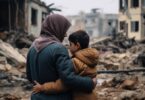World Day Against Child Labour takes place every June 12. The International Labour Organization launched the day in 2002. Organizations, governments, and employers use June 12 to draw attention to child labor and how to help children subjected to child labor. In 2015, the Sustainable Development Goals included a commitment to ending child labor “in all its forms” by 2050. How is child labor defined? What can be done to end it?
Child labor: A definition
The ILO defines child labor as work that “deprives children of their childhood, their potential, and their dignity.” By preventing a child from receiving an education, child labor is also harmful to mental development. Physically-dangerous labor is also harmful for a child’s development. If the labor also includes threats and coercion, it’s classified as “labor trafficking.” Not all work done by children is considered “child labor.” As an example, helping with a family business and doing chores outside of school hours are not part of the definition.
There are a few more terms worth defining: “worst forms” and “hazardous work.” The “worst forms” of child labor include all forms of slavery, pornography, prostitution, and drug trafficking. Work that is likely to harm the “health, safety, or morals of children” is also considered part of this definition. “Hazardous work” includes work that exposes kids to psychological, physical or sexual abuse, as well as toxic substances, noise levels, and extreme temperatures. Work with dangerous machinery and tools is also considered hazardous.
Learn more about the human rights of children in a free course.
Child labor in the US
In the United States, child labor became a problem during the Industrial Revolution. There were no laws protecting children since for most of history, children worked alongside adults on farms and in many other trades. However, the Industrial Revolution ushered in an era where children were exploited to an extreme degree. In factories, they worked dangerous jobs with long hours. They were much easier to manipulate and were paid less than adults. In 1900, 18% of American workers were younger than 16.
Activists stepped up and helped establish laws protecting children. However, child labor in the US continues though not as blatantly. According to a 2018 report from PBS, thousands of unaccompanied minors were at risk for labor trafficking.
Child labor around the world
Child labor is prevalent on a global scale outside of the US. Children work in dangerous environments like tobacco farms and gold mines. 71% of child laborers are found in agriculture, while 17% are in services and 12% are in the industrial field, according to the UN.
In areas hit by conflict and natural disasters, children are among the first to have their rights violated through labor. Regarding the gender breakdown of labor, UNICEF states that girls often begin work at a younger age than boys, especially in rural areas. Instead of going to school, girls stay home to complete chores. Overall, 152 million children are in child labor and 73 million of those are in “hazardous work.”
Effects of child labor
Child labor has clear negative effects on an individual’s development and future. The first is that it puts their bodies in harm’s way. Working with dangerous machines, in sweltering temperatures, and around toxic substances has physical consequences. Children in this type of labor are vulnerable to serious and fatal injuries. In environments with pesticides and toxins, brain damage is more likely. Malnutrition is also common among children subject to child labor.
The psychological effects of child labor should not be ignored. Depression, drug dependency, PTSD, and other mental health issues are commonplace. While research on child labor and health is limited, the data that does exist shows negative effects.
Labor also prevents a child from getting an education. Whether the work takes them away from their studies entirely or disrupts it with long hours away, child laborers don’t receive an adequate education. Without a good education, a child grows up without opportunities for higher-income jobs. This perpetuates cycles of poverty, gender inequality, and fuels child labor in the future.
What’s being done?
The UN’s goal is to eliminate child labor by 2050, so what’s the status? It’s getting better. Since 2000, rates of hazardous labor have been reduced by half. Organizations like the Bureau of International Labor Affairs, a US agency, work with partners to end child labor around the world. Since 1995, ILAB has reduced the number of child laborers by 94 million. The ILO’s International Programme on the Elimination of Child Labour has been working since 1992 to encourage policy reform, raise awareness, and more.
Reducing child labor involves addressing the issues that cause the issue in the first place. That means identifying communities at risk and providing support. Nations also need to promote education (especially for girls) and put laws in place that protect children from exploitation. Ending child labor by 2050 requires both systemic and cultural changes.












